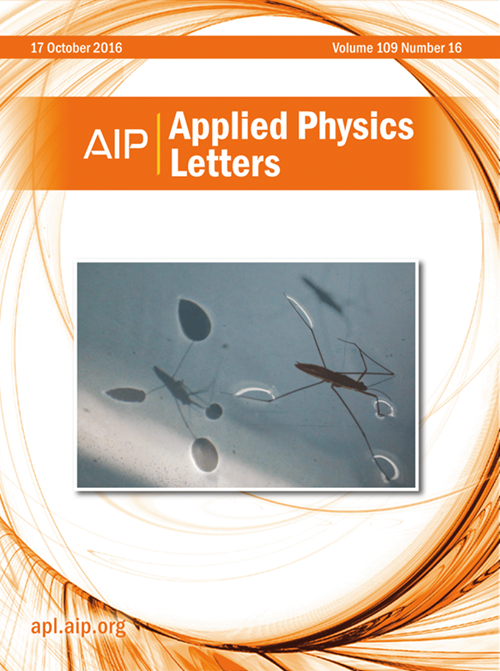Membrane phononic crystals for high-Qm mechanical defect modes at MHz frequencies in piezoelectric aluminum nitride
IF 3.5
2区 物理与天体物理
Q2 PHYSICS, APPLIED
引用次数: 0
Abstract
Nanomechanical resonators with exceptionally low dissipation are advancing mechanics-based sensors and quantum technologies. The key for these advances is the engineering of localized phononic modes that are well-isolated from the environment, i.e., that exhibit a high mechanical quality factor, Qm. Membrane phononic crystals fabricated from strained thin films can realize high-Qm single or multiple localized phononic defect modes at MHz frequencies. These defect modes can be efficiently interfaced with out-of-plane light or coupled to a microwave quantum circuit, enabling readout and control of their motion. When membrane phononic crystals are fabricated from a crystalline film, they could offer built-in functionality. We demonstrate a membrane phononic crystal realized in a strained 90 nm thin film of aluminum nitride (AlN), which is a crystalline piezoelectric material. We engineer a high-Qm localized phononic defect mode at 1.8 MHz with a Qm×fm-product of 1.5×1013 Hz at room temperature. In future devices, the built-in piezoelectricity of AlN can be utilized for direct coupling to qubits or in situ tuning of mechanical mode frequencies, defect mode couplings, or acoustic bandgaps, which can be used as building blocks of tunable phononic circuits or low-noise sensors.压电氮化铝在MHz频率下的高qm机械缺陷模式的膜声子晶体
极低耗散的纳米机械谐振器正在推动基于力学的传感器和量子技术的发展。这些进步的关键是与环境完全隔离的局部声子模式的工程设计,即表现出高机械质量因子(Qm)。由应变薄膜制备的膜声子晶体可以在MHz频率下实现高qm的单个或多个局域声子缺陷模式。这些缺陷模式可以有效地与面外光接口或耦合到微波量子电路,从而实现读出和控制其运动。当膜声子晶体由结晶膜制成时,它们可以提供内置功能。我们展示了一种在90nm氮化铝薄膜上实现的薄膜声子晶体,氮化铝是一种晶体压电材料。我们在室温下设计了1.8 MHz的高qm局域声子缺陷模式,其Qm×fm-product为1.5×1013 Hz。在未来的设备中,AlN的内置压电性可以用于直接耦合量子位或原位调谐机械模式频率,缺陷模式耦合或声学带隙,这可以用作可调谐声子电路或低噪声传感器的构建块。
本文章由计算机程序翻译,如有差异,请以英文原文为准。
求助全文
约1分钟内获得全文
求助全文
来源期刊

Applied Physics Letters
物理-物理:应用
CiteScore
6.40
自引率
10.00%
发文量
1821
审稿时长
1.6 months
期刊介绍:
Applied Physics Letters (APL) features concise, up-to-date reports on significant new findings in applied physics. Emphasizing rapid dissemination of key data and new physical insights, APL offers prompt publication of new experimental and theoretical papers reporting applications of physics phenomena to all branches of science, engineering, and modern technology.
In addition to regular articles, the journal also publishes invited Fast Track, Perspectives, and in-depth Editorials which report on cutting-edge areas in applied physics.
APL Perspectives are forward-looking invited letters which highlight recent developments or discoveries. Emphasis is placed on very recent developments, potentially disruptive technologies, open questions and possible solutions. They also include a mini-roadmap detailing where the community should direct efforts in order for the phenomena to be viable for application and the challenges associated with meeting that performance threshold. Perspectives are characterized by personal viewpoints and opinions of recognized experts in the field.
Fast Track articles are invited original research articles that report results that are particularly novel and important or provide a significant advancement in an emerging field. Because of the urgency and scientific importance of the work, the peer review process is accelerated. If, during the review process, it becomes apparent that the paper does not meet the Fast Track criterion, it is returned to a normal track.
 求助内容:
求助内容: 应助结果提醒方式:
应助结果提醒方式:


